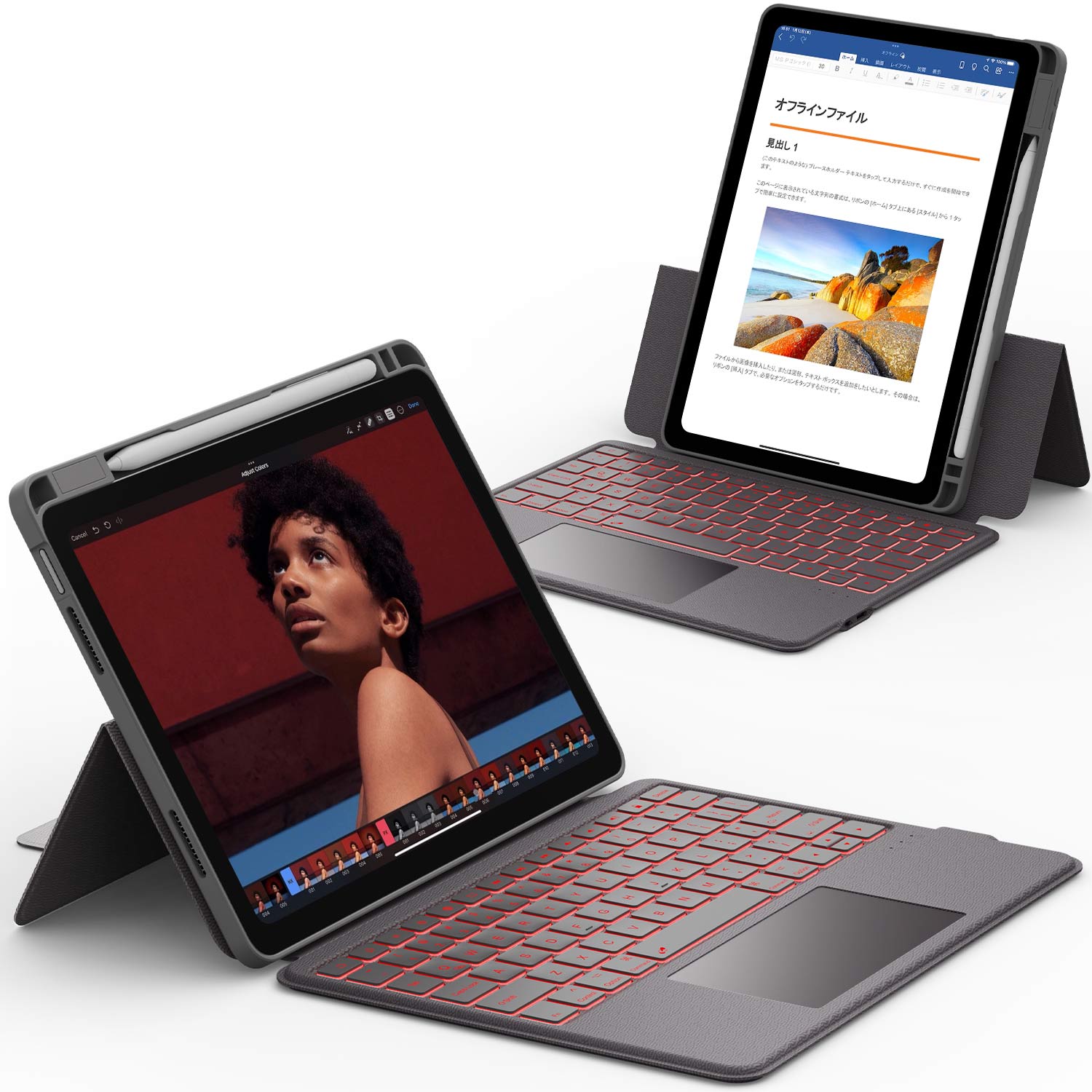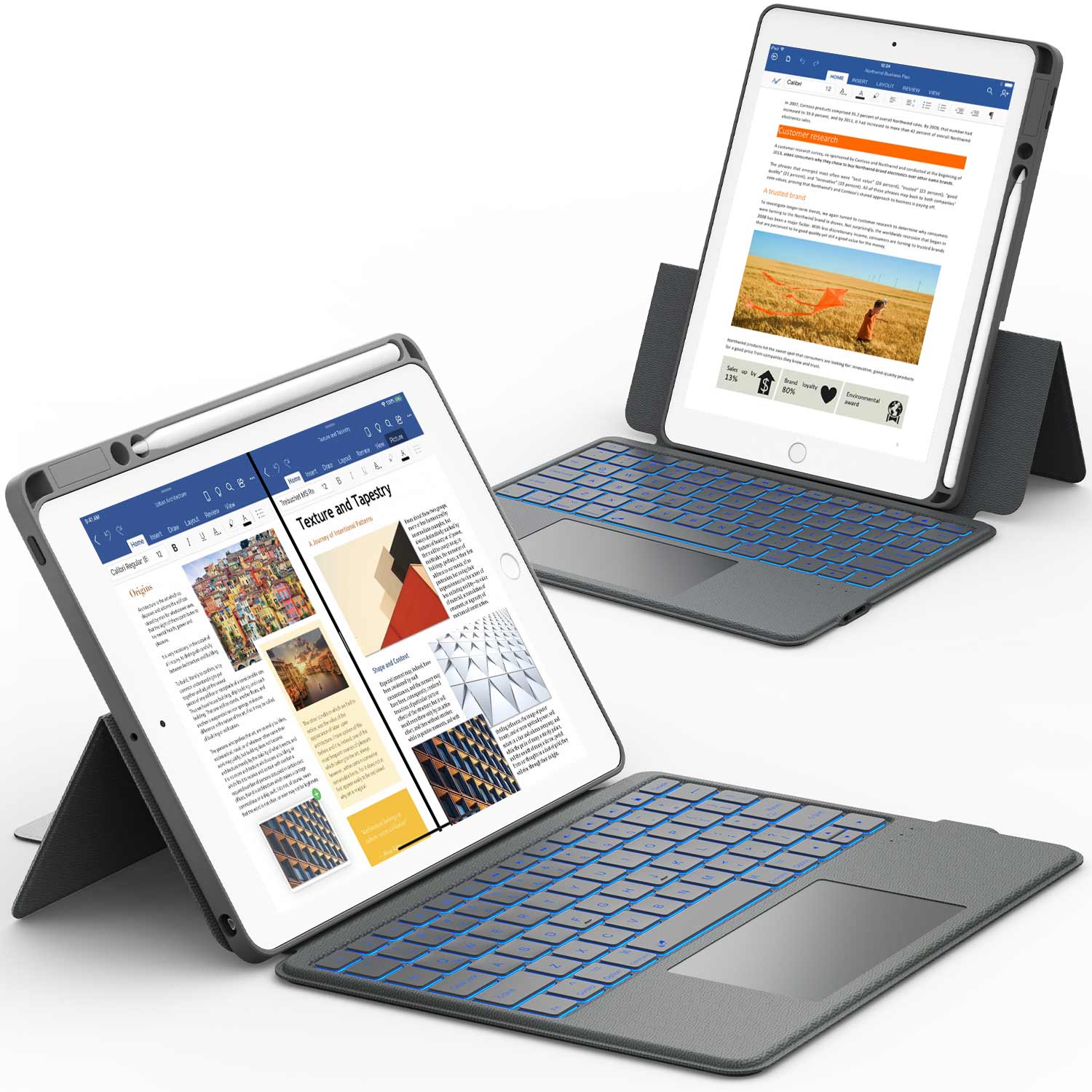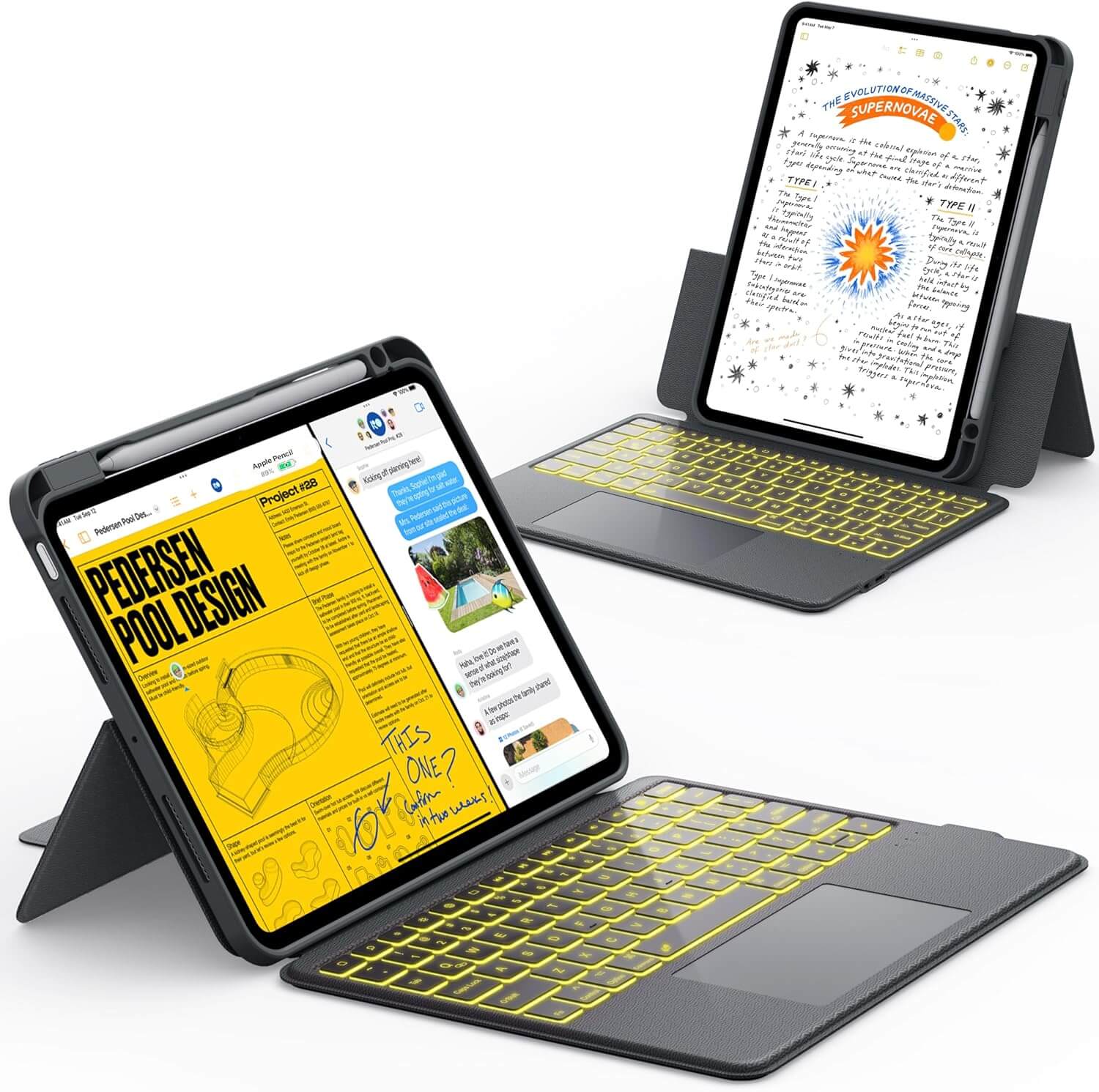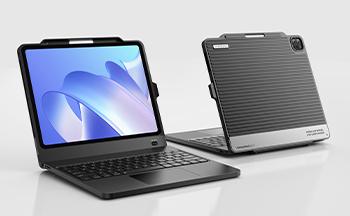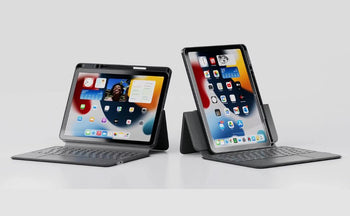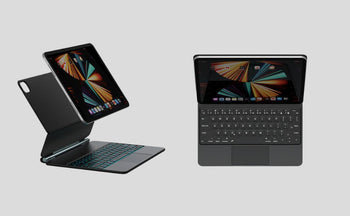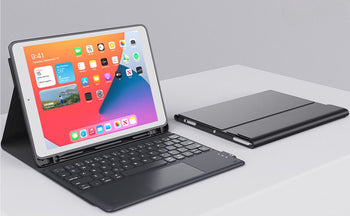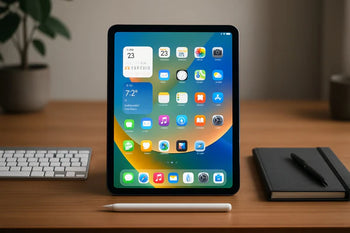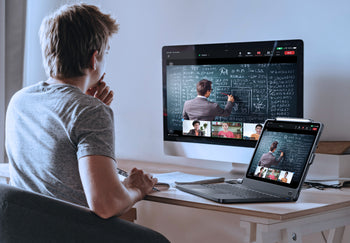Typing in low light can be annoying when you can’t see the keys well. Most modern laptops and many desktop keyboards have a backlight feature that helps in dim spaces.
You can usually turn on your keyboard backlight by pressing the function key with a light icon, often with the Fn key.
Not every device has this feature, and the way you turn it on changes by brand or operating system. Some keyboards use simple shortcuts, while others need built-in settings or special software.
Knowing which method works for your device saves you time and frustration.
Understanding Keyboard Backlighting

Keyboard backlighting helps you see the keys better in low-light situations. Some devices even let you customize brightness or colors for comfort or style.
What Is a Backlit Keyboard
A backlit keyboard has lights under the keys. The light shines through the letters and symbols, so you can see them in the dark.
Most laptops and many external keyboards include this feature now. You usually control the keyboard backlight with a function key, a shortcut, or software from the company that made your device.
Backlighting isn’t just glow-in-the-dark paint. It uses LED lights that you can turn on, off, or adjust. Some models only have white light, but others let you change brightness or even colors.
If your keyboard never lights up, it probably doesn’t have the hardware for backlighting. In that case, you might need an external backlit keyboard or just use a lamp.
Benefits of Keyboard Backlighting
The main perk of keyboard backlighting is being able to see what you’re typing in the dark. You don’t have to squint or use a desk lamp just to find the right key.
It’s also handy if you’re not a touch typist. The glowing keys make it easier to spot letters, numbers, and function keys.
Some laptops let you pick how bright the backlight is. You can keep it dim to save battery or crank it up when you need it.
Honestly, keyboard lighting also just looks cool. Gaming laptops, for example, often have RGB lighting so you can pick colors or patterns. It’s not necessary, but it makes your setup feel more personal.
Types of Keyboard Lighting
There are a few types of keyboard backlighting. The most common is single-color white lighting, which just helps you see the keys.
Some keyboards let you adjust brightness with different levels. You can usually cycle through low, medium, and high with a key combo.
Gaming laptops and high-end keyboards often have RGB lighting. You can pick from tons of colors and sometimes set effects like breathing or wave patterns.
A few devices let you set zoned lighting, where different parts of the keyboard light up in different colors. That’s great for highlighting gaming keys or shortcuts.
Here’s a quick comparison:
|
Type of Lighting |
Features |
Common Use Case |
|
Single-color (white) |
Basic visibility, no customization |
Everyday typing, office |
|
Adjustable brightness |
Multiple brightness levels |
Laptops, general use |
|
RGB lighting |
Full color control, effects available |
Gaming, personalization |
|
Zoned lighting |
Different colors for key groups |
Gaming, productivity apps |
💡 Once you’ve mastered turning on your keyboard backlight, you might also want to explore iPad personalization. 👉 By reading our guide, How to Rename iPad: Quick Step-by-Step Guide, you’ll learn how to give your device a custom name.
Checking If Your Device Supports Keyboard Backlight

Before trying to turn on the backlight, check if your laptop or keyboard even has it. You can do this by looking at the keys and checking your device’s specs.
Identifying Backlight Features on Your Keyboard
Most laptops with a backlit keyboard have a special key or symbol to control the light. Check the top row of function keys (F1–F12). Look for icons like a glowing keyboard, a light bulb, or a sun.
If you spot one, press it. On a lot of laptops, you also need to hold the Fn key. Pressing it more than once usually cycles through brightness levels.
If you don’t see any icons, your keyboard might not have backlighting. Sometimes the spacebar has a backlight symbol, so check there too.
Try using your laptop in a dark room. If nothing lights up when you press the keys, your device probably doesn’t support it.
Consulting Device Specifications
If you’re unsure, look up your laptop’s model on the manufacturer’s website. Check under the keyboard section for “backlit keyboard” or “keyboard backlight support.”
Brands like Lenovo, HP, Dell, and ASUS usually mention it in the specs. On Macs, check System Settings > Keyboard for backlight options.
You can also look in the BIOS or UEFI on some Windows laptops. If you don’t see a backlight setting, your device probably doesn’t have it.
If you still can’t tell, reach out to customer support or check the user manual. That way, you don’t waste time troubleshooting something that’s not there.
How to Turn On Keyboard Backlight on Windows Devices
You can control your keyboard backlight in a few ways, depending on your laptop and Windows version. Most laptops let you use a shortcut key, Windows settings, or special software from the manufacturer.
Using Keyboard Shortcut or Backlight Key
Most Windows laptops have a backlight key in the top row, like F5, F6, F10, or the spacebar. The key usually has a glowing keyboard or light icon.
Press the key to turn on the backlight. Sometimes, you need to hold the Fn key at the same time. Pressing it again cycles through brightness modes like off, dim, and bright.
If nothing happens, double-check that your laptop actually supports keyboard lighting. Some models just don’t have it.
Enabling Through Windows Mobility Center
Windows has a tool called Windows Mobility Center for hardware settings. Open it with Windows + X and pick Mobility Center, or just search for it in the Start menu.
Look for a section called Keyboard backlight or Keyboard brightness. If your device supports it, you’ll see options to turn the light on or off and set a timeout.
If you don’t see a backlight option, your laptop probably doesn’t support control through this tool. Try the shortcut key or manufacturer software instead.
Adjusting Backlight Brightness
Lots of laptops let you change backlight brightness. Usually, you just press the backlight key multiple times to cycle through low, medium, and high settings.
Some laptops let you adjust brightness in software, like a slider in Windows Mobility Center or your control panel.
If your backlight turns off after a few seconds, look for a timeout option. Some laptops do this to save power.
⌨️ If your keyboard ever behaves unexpectedly—like floating around the screen instead of staying fixed—read our article, How to Fix Floating Keyboard on iPad: Quick & Easy Solutions, for simple fixes.
Turning On Keyboard Backlight on Other Operating Systems
Different operating systems handle keyboard backlights in their own way. The steps depend on your device, settings, and keyboard hardware.
macOS Keyboard Backlight Controls
On a MacBook, you can control keyboard lighting with hardware keys and system settings. Most use the F5 and F6 keys to lower or raise brightness. If you have a Touch Bar, the slider is there instead.
You can also go to System Settings > Keyboard to adjust things. Turn on “Adjust keyboard brightness in low light” to let the Mac change lighting automatically. This uses the ambient light sensor and helps save battery.
You can set the backlight to turn off after you stop typing for a while. The menu lets you pick how long. If your keyboard never lights up, check if your MacBook model actually supports backlighting.
Chromebook Keyboard Lighting
Most Chromebooks use function keys at the top for the backlight. Look for a small sun or light icon. Just press them to change brightness.
Some models only turn the light on or off, while others have several brightness levels. If nothing happens, check Settings > Device > Keyboard. You might find a toggle for automatic lighting in low light.
Chromebooks often turn off the backlight quickly to save battery, but it comes back on when you press a key. If you can’t find any option, your Chromebook might not have a backlit keyboard—this feature is usually on mid-range or better models.
Linux Backlight Activation
Linux systems can be a bit unpredictable here. On many laptops, try holding Fn + space bar or pressing an F-key with a light icon. These shortcuts often cycle through brightness levels.
If the backlight still doesn’t work, you might need to enable it with a command. In some Linux setups, try this in the terminal:
xset led on # turns on backlight
xset led off # turns off backlight
Advanced users sometimes install OpenRGB for more control. It lets you pick colors, patterns, and brightness if your hardware supports it.
Support on Linux really depends on your laptop. If nothing works, check your BIOS or firmware settings to see if backlight control is turned off there.
Customizing Keyboard Backlight Settings
You can change your keyboard lighting to fit your needs. Adjust how long it stays on, pick colors, or set effects if your laptop supports it.
These options help you save battery, cut down on distractions, and make your setup feel more comfortable.
Setting Backlight Timeout Duration
Most laptops let you control how long the keyboard light stays on when you stop typing. This can help your battery last longer, which is handy if you’re using your laptop without plugging it in.
To find this option, check your system settings. On Windows, open Control Panel > Hardware and Sound > Power Options > Advanced settings.
Look for Keyboard backlight timeout or something similar. Some HP laptops let you change this in the BIOS too.
Here are some common timeout settings:
|
Timeout Option |
Description |
|
Always On |
Light stays on until you turn it off |
|
10-30 Seconds |
Backlight turns off quickly when idle |
|
1-5 Minutes |
A middle ground for light use and saving power |
|
Never |
Disables the automatic timeout |
If your laptop doesn’t have this feature in the settings, you might need to use the manufacturer’s software. Try HP OMEN Command Center or MSI Center to set the time.
Changing Backlight Colors and Effects
Some keyboards just have white backlighting with a few brightness levels. But if you’ve got a gaming laptop or a fancy model, you probably get RGB lighting for more color choices and effects.
To change colors, open your laptop’s special software. For example, use OMEN Command Center (HP), Mystic Light (MSI), or Aura Sync (ASUS).
- Pick a single color if you want things simple
- Set different colors for zones or even for each key
- Try effects like fade, ripple, or cycling through colors
You can usually adjust brightness in the same app. Set it to low, medium, or high—whatever works best for your space. If your laptop doesn’t support color changes, you can still turn the light on or off and change how bright it is.
📍 Managing your setup is easier when you know how to find your device anytime. To stay prepared, check out our full article, How to Find My iPad: Quick Steps to Locate Your Device.
Troubleshooting Keyboard Backlight Issues
Keyboard backlight problems can happen when your software is old, your settings are off, or there’s a hardware conflict. Most of the time, you can fix it by updating drivers, checking your function keys, or adjusting BIOS and system settings.
Updating Keyboard Drivers
Old or missing keyboard drivers might stop your backlight from working. In Windows 11, open Device Manager by right-clicking the Start menu and picking Device Manager.
Expand Keyboards, right-click your keyboard, and choose Update driver. Select Search automatically for drivers to let Windows hunt for the latest one.
If Windows can’t find a driver, go to your laptop maker’s support page and download the newest keyboard or system control driver. Installing the right driver often brings the backlight back.
Also, check for updates under Windows Update. Sometimes driver updates show up there instead. Restart your laptop after you install anything new to see if the backlight works again.
Fixing Non-Responsive Backlight
If your keyboard backlight doesn’t respond, try the function key shortcut first. On lots of laptops, pressing Fn + F5, Fn + F7, or another marked key changes the brightness.
Press the key combo a few times to cycle through the levels. Make sure the backlight feature is turned on in your laptop’s software.
For ASUS, open Armoury Crate and check the Lighting settings. Other brands might use Lenovo Vantage or HP Command Center.
If everything looks right but the light still won’t turn on, do a full restart. Sometimes Windows 11 just needs a reset to fix weird glitches.
Check if your keyboard actually supports backlighting. Look for a backlight icon on keys like Esc or Space. No icon? Your keyboard might not have backlight hardware.
BIOS and Advanced Settings
Sometimes the backlight gets turned off in BIOS. Restart your laptop and hit the right key (usually F2, Del, or Esc) to enter BIOS.
Look for Keyboard Backlight, Lighting, or Advanced settings. Turn it on if it’s off and save before you exit.
If you started having problems after a BIOS update, try restoring the default BIOS settings. That can undo any changes that messed up the backlight.
If the settings all look good but the backlight still won’t work, consider doing a CMOS reset. This clears out stored hardware settings and makes the system reload the defaults.
Always get BIOS updates from your laptop maker’s official site. Bad updates can cause even bigger problems than a broken backlight.
Light Up Your iPad Experience with CHESONA Keyboard Cases
Learning how to turn on your keyboard backlight is all about making typing easier in low light. If you use an iPad, you can take that same convenience even further with a CHESONA backlit keyboard case.
These cases combine adjustable lighting, laptop‑style typing, and full device protection—perfect for late‑night work, study sessions, or travel.
- CHESONA Step Series Keyboard Case for iPad 10th 10.9″: A slim, lightweight case with a backlit keyboard and dual Bluetooth channels so you can switch between devices instantly.
- CHESONA ArmorDock Series Keyboard Case for iPad Pro 12.9″ (6/5/4/3): A rugged case built for power users, featuring ports, HDMI output, SSD storage support, and a responsive backlit keyboard.
- CHESONA Cloud Series Keyboard Case for iPad Pro 13″ (M4) 2024: Designed for Apple’s newest iPad Pro, this case delivers a premium backlit typing experience with a sleek, portable design.
With CHESONA, you don’t just get a glowing keyboard—you get a complete upgrade that turns your iPad into a powerful, all‑in‑one workstation.
Frequently Asked Questions
What are the steps to activate the backlight on a laptop keyboard?
Most laptops use a function key up top. Find a key with a light or sun symbol and press it, sometimes with the Fn key. Some laptops let you turn on the backlight in their software or BIOS, too.
Can you manually adjust the brightness of a keyboard's backlight?
Yeah, lots of laptops let you do that. Just press the backlight key a few times to cycle through brightness levels. Some systems even have a slider in Windows Mobility Center.
Is it possible to enable keyboard backlighting on a Mac?
On a MacBook, use the F5 and F6 keys to change the keyboard light. You can also tweak it in System Settings > Keyboard. The light dims by itself if you’re in a bright room.
What should I do if my keyboard backlight is not working?
First, check if your laptop even has a backlight. Update your keyboard drivers and restart your laptop. If it still won’t work, try your system’s troubleshooting tool or check the BIOS/firmware settings.
How do you turn on the backlight for keyboards on Windows 10 devices?
On Windows 10, use the function key for the backlight, usually with Fn. You can also open Windows Mobility Center to adjust the setting. Some brands have their own apps for more options.
Are there specific keys or shortcuts to control the backlight on my keyboard?
Yeah, most keyboards let you control the backlight using the function row. On Lenovo, you usually press Fn + Spacebar.
Acer laptops often use F9 for this. Dell keyboards might use any key between F5–F10.
Some external keyboards just have a backlight button. Others need you to use their software, which can be a bit annoying but sometimes gives you more options.
